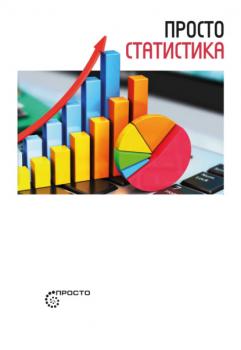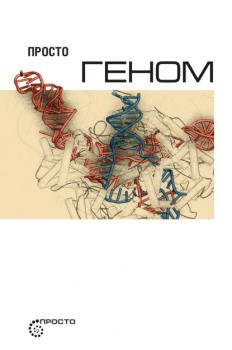Группа авторов
Список книг автора Группа авторовDigital Transformation of the Laboratory
This practical book in instrumental analytics conveys an overview of important methods of analysis and enables the reader to realistically learn the (principally technology-independent) working techniques the analytical chemist uses to develop methods and conduct validation. What is to be conveyed to the student is the fact that analysts in their capacity as problem-solvers perform services for certain groups of customers, i.e., the solution to the problem should in any case be processed in such a way as to be «fit for purpose». <br> The book presents sixteen experiments in analytical chemistry laboratory courses. They consist of the classical curriculum used at universities and universities of applied sciences with chromatographic procedures, atom spectrometric methods, sensors and special methods (e.g. field flow fractionation, flow injection analysis and N-determination according to Kjeldahl).<br> The carefully chosen combination of theoretical description of the methods of analysis and the detailed instructions given are what characterizes this book. The instructions to the experiments are so detailed that the measurements can, for the most part, be taken without the help of additional literature.<br> The book is complemented with tips for effective literature and database research on the topics of organization and the practical workflow of experiments in analytical laboratory, on the topic of the use of laboratory logs as well as on writing technical reports and grading them (Evaluation Guidelines for Laboratory Experiments).<br> A small introduction to Quality Management, a brief glance at the history of analytical chemistry as well as a detailed appendix on the topic of safety in analytical laboratories and a short introduction to the new system of grading and marking chemicals using the «Globally Harmonized System of Classification and Labelling of Chemicals (GHS)», round off this book.<br> This book is therefore an indispensable workbook for students, internship assistants and lecturers (in the area of chemistry, biotechnology, food technology and environmental technology) in the basic training program of analytics at universities and universities of applied sciences.<br>
Processing of Ceramics
PROCESSING OF CERAMICS A firsthand account of the “transparent ceramics revolution” from one of the pioneers in the field Processing of Ceramics: Breakthroughs in Optical Materials is an in-depth survey of the breakthrough research and development of transparent ceramics, covering historical background, theory, manufacturing processes, and applications. Written by an internationally-recognized leader in the technology, this authoritative volume describes advances in optical grade ceramics over the past three decades—from the author’s first demonstration of laser ceramics in Japan in 1991 to new applications of transparent ceramics such as ceramic jewels, wireless heating elements, and mobile device displays.The author provides numerous development examples of laser ceramics, crystal and ceramic scintillators, magneto-optic transparent ceramics, optical ceramic phosphors for solid state lighting, and more. Detailed chapters cover topics such as the technical problems of conventional translucent and transparent ceramics, the characteristics of scintillation materials, single crystal and ceramic scintillator fabrication and optimization, and solid-state crystal growth (SSCG) methods for single crystal ceramics. Processing of Ceramics: Outlines the author’s 30 years of work in the area of transparent ceramicsProvides a detailed history of the world's first ceramic laser developmentDemonstrates how laser oscillation using ceramic materials match or surpass high-quality single crystalsDescribes how innovative polycrystalline ceramics have transformed optical material developmentIncludes extensive references, chapter introductions and summaries, and numerous graphs, tables, diagrams, and color images Processing of Ceramics is an invaluable resource for researchers, materials scientists, engineers, and other professionals across academic and industrial fields involved in the development and application of optical grade ceramics.
Handbook of Ecological and Ecosystem Engineering
Learn from this integrated approach to the management and restoration of ecosystems edited by an international leader in the field The Handbook of Ecological and Ecosystem Engineering delivers a comprehensive overview of the latest research and practical developments in the rapidly evolving fields of ecological and ecosystem engineering. Beginning with an introduction to the theory and practice of ecological engineering and ecosystem services, the book addresses a wide variety of issues central to the restoration and remediation of ecological environments. The book contains fulsome analyses of the restoration, rehabilitation, conservation, sustainability, reconstruction, remediation, and reclamation of ecosystems using ecological engineering techniques. Case studies are used to highlight practical applications of the theory discussed within. The material in the Handbook of Ecological and Ecosystem Engineering is particularly relevant at a time when the human population is dramatically rising, and the exploitation of natural resources is putting increasing pressure on planetary ecosystems. The book demonstrates how modern scientific ecology can contribute to the greening of the environment through the inclusion of concrete examples of successful applied management. The book also includes: A thorough discussion of ecological engineering and ecosystem services theory and practice An exploration of ecological and ecosystem engineering economic and environmental revitalization An examination of the role of soil meso and macrofauna indicators for restoration assessment success in a rehabilitated mine site A treatment of the mitigation of urban environmental issues by applying ecological and ecosystem engineering A discussion of soil fertility restoration theory and practice Perfect for academic researchers, industry scientists, and environmental engineers working in the fields of ecological engineering, environmental science, and biotechnology, the Handbook of Ecological and Ecosystem Engineering also belongs on the bookshelves of environmental regulators and consultants, policy makers, and employees of non-governmental organizations working on sustainable development.
Polysaccharides
This book provides the whole spectrum of polysaccharides from basic concepts to commercial market applications. Chapters cover various types of sources, classification, properties, characterization, processing, rheology and fabrication of polysaccharide-based materials and their composites and gels. The applications of polysaccharides include in cosmetics, food science, drug delivery, biomedicine, biofuel production, marine, packaging, chromatography and environmental remediation. It also reviews the fabrication of inorganic and carbon nanomaterials from polysaccharides. The book incorporates industrial applications and will fill the gap between the exploration works in the laboratory and viable applications in related ventures.
Просто статистика
Статистика помогает улучшить жизнь человечества в целом и отдельных групп людей. Современный бизнес немыслим без статистики. Она используется для изучения потребителей, спроса на конкретные товары, а также прогнозирования продаж, подсказывает наиболее конструктивные решения. Статистика используется в медицине и помогает эффективнее лечить болезни. Статистика распространена в экономической, политической, социальной и других сферах, она показывает множество конкретных явлений в виде таблиц, графиков, диаграмм. Жизнь современного человека без статистики невозможна. В книге почти нет формул, она написана простым и понятным языком и адресована всем, хочет больше узнать об этой любопытной науке и приобрести практические навыки.
Просто геном
Стоит ли нам манипулировать геномом нерожденных и менять генофонд homo sapiens, который нельзя будет перезапустить так, чтобы он развивался в обратную сторону? Готовы ли мы, как вид, взять на себя ответственность за собственную эволюцию и целенаправленно редактировать наши геномы? Как только мы полностью поймем генетические факторы, которые определяют здоровье и работоспособность человека, мы сможем выбрать или, возможно, даже спроектировать эмбрионов с генетическим составом, отличным от такового у их родителей. Или даже лучше, чем у родителей. Книга знакомит со множеством возможностей, открытым человечеству благодаря новейшим достижениям генетиков, описывает захватывающие перспективы и ставит серьезные проблемы, связанные с генной инженерией.
Апостолы Линнея. Истоки селекции растений
В XVIII веке ботаника еще не утвердилась в обществе и умах людей так, как физика и математика. Из книги вы узнаете о фактическом становлении этой науки и о том, как и почему все больше людей по всему миру стали ею интересоваться. Швед Карл Линней классифицировал растения, животных и минералы, его система «выжила» благодаря тому, что выбранные признаки оказались очень наглядными и удобными для применения на практике. Созданной им системой наименования видов пользуются до сих пор во всем мире. Джозеф Бэнкс описал невероятное количество растений и способствовал распространению их по миру – по английским колониям с похожим климатом. Книгу завершает рассказ об истории садоводства в Англии и самых знаменитых садах этой страны. Издание будет полезно всем, интересующимся растениями, историей географических открытий и садоводством.
Неизвестный Тарковский. Сталкер мирового кино
Прошло уже тридцать лет, как не стало Андрея Тарковского, и до сих пор не утихают страсти вокруг его имени и творчества. Он умер в 54 года, испытав трагедию души: Тарковский не мог жить в России и не мог без нее. Каждый фильм его творческого наследия по-прежнему загадка, тайна времени и пространства, которую предстоит еще разгадывать потомкам, – «Иваново детство», «Андрей Рублев», «Солярис», «Зеркало», «Сталкер», «Ностальгия», «Жертвоприношение». О том, каким был выдающийся мастер кино XX века, в этой книге вспоминают люди, близко знавшие его. Среди них – поэт Андрей Вознесенский, кинооператор Вадим Юсов, кинорежиссер Михаил Ромм, актер и режиссер Николай Бурляев, композитор Эдуард Артемьев, актер Юрий Назаров, актрисы Алла Демидова, Валентина Малявина и другие. В формате PDF A4 сохранен издательский макет.









